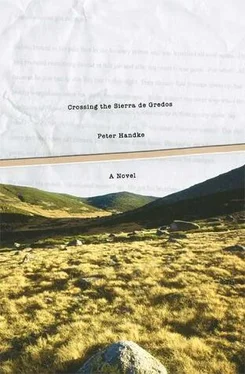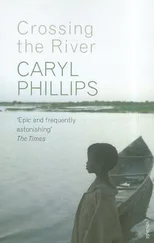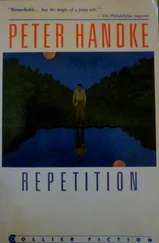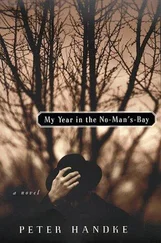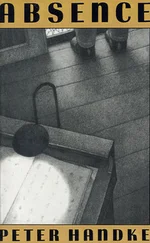Another law of sorts that determined the generation of images: they arrived — and again she was sure this was true for everyone — primarily in the morning, in the hour after waking. Though for her, something about the images had changed of late, in the last few years. The images still came as if without reason, unbidden; primarily at the beginning of the day; and so forth. Yet more and more the images originated in one particular part of the world, and those that flashed in from all over the earth — now a tree root in northern Japan, now a rain puddle from a Spanish enclave in North Africa, now a hole in a frozen Finnish lake — were becoming increasingly rare.
She regretted that. It made her uneasy. For the images she had previously received from the world were all linked, as if obedient to a law, with places where, when she had actually been there, she had experienced unity or harmony — of which she had not been aware at the moment — that, too, such a law? Even if these areas were “beautiful,” “lovely,” or even “picturesque” (that in itself already constituting a sort of image of an area), that did not contribute to their subsequent image-worthiness; rather, they had to have left an imprint on you, without your knowledge, from which later a world at peace, an entire world in a still possible peace, or perhaps precisely that “enclosure of the grander time,” will have taken shape, unexpected and unhoped for.
In the meantime now, the images, specifically those morning-fresh ones, were increasingly limited to an area, which, every time she was there, had shown her a peaceful face for only brief moments, but more usually a hostile, menacing one, yes, more than once a cannibalistic face, the face of death.
And this region was the Sierra de Gredos. On some days she reminded herself that she was a survivor; that if she belonged to any people or tribe, it was the tribe of survivors; and that the awareness of having survived, and of surviving along with one unknown survivor or another, far off or nearby, had to be the thought that forged the strongest bonds. And she had become this kind of survivor through her crossings of the Sierra de Gredos.
When she made a point of calling the Sierra to mind, the massif presented primarily memories of adversities, major ones or merely small ones, such as the absence of air in the dense, light-blocking conifer forests, and the wood-roads, where one had felt cheerful only moments earlier, narrowing over the course of a few steps into impassable mud slides. In the images, in the unsummoned image, however: the Sierra de Gredos and peace, or peaceableness, were one and the same; and it could be no other way with these images, this kind of image — a fundamental law of the image: make peace, and hop to it! Take action. Become active. But how? As the image dictates!
“Doesn’t that deserve a serious research project?” she challenged the author. “To find out why, in recent times, most of the images, and not only mine but also everyone else’s, originate in regions where in reality one has experienced hardly anything good but rather the very worst; and, with me as the experimental subject, to study as well why the images from the Sierra de Gredos keep nudging one almost constantly, as insistently and as gently as the wooly heads of a thousand times a thousand sheep, ever since it has been rumored that war is about to break out there?”
The shadows of water-skaters on a riverbed: Where was that? — By a stone bridge, known as the “Roman” bridge, over the río Tormes, which rises in the Sierra and, although in some stretches as wide as a river, remains a rushing brook all the way to the end of the central massif in Barco de Ávila, overflowing into innumerable still pools. — A fawn, separated from its mother, its coat soaked in a downpour, standing a hand’s breadth from her, likewise drenched, the animal too weak to flee, or merely curious: Where was that? — On a stone-paved road. A stone-paved road; in the mountains? yes, right below Puerto del Pico, the main pass through the Sierra de Gredos; the flagstones cracked in many places, some missing, truly the only remnant in the Sierra of the Roman colonial era, a Roman road winding down the southern flank in lasso-like S-curves, the “calzada romana, ” and, unlike the modern road over the pass, clearly part of the mountain range even two thousand years ago, less built there than simply laid along the slopes, following what was already present, sketched out beforehand by nature. — On a wall above an outdoor sink, a broken mirror, reflecting the crowns of the fir trees in the sun, and behind them, multiplied by the cracks, the pyramid-shaped summit of Pico de Almanzor: Where was that? — Back by the main river of the Sierra de Gredos, the río Tormes, at a children’s summer camp, deserted long since when she hiked past it, or closed down, and not only because it is autumn (no, it is not “autumn”; no specific season ever appears in the images), the faucets either unscrewed or without water, the mirror shards opposite her at hip level, so that she must bend over (“I must”—she smiles), to look at herself; above her head the Almanzor forming a tricorn hat.
Hop to it! Do something. Help. Reach out. Serve. Serve? Yes, serve. Do good? No, be good. Lend a hand. Mediate? No, we know about you mediators and intermediaries rushing blindly to serve as go-betweens and thereby merely hastening a truly disastrous disaster. For heaven’s sake, do not mediate! Participate and be there — and in this way mediate after all, or rather facilitate something, even if only with your eyes, what? The image? No, that is not possible: not the image but an intuition of it; that is sufficient.
And thus, for instance, the financial powerhouse, the adventurer, the former film actress, or whatever she is, sews on a button early that morning near Tordesillas, or wherever, for the toy manufacturer, or whatever he is, in the citadel, or dive. And the man takes it for granted and does not even object, sitting next to her again at the same small table by the window hardly the size of a loophole. And she also darns a glove for him: for it is bitter cold on the southern plateau, colder than in the northwestern riverport city, according to the radio. And for their departure she then fetches his suitcase from his room. And the suitcase weighs her down, even her, this inconspicuously strong woman with the large hands; that is how heavy toys are these days. A toy market in the vicinity of an impending war?
With that the woman has finished serving him. From now on he must make his way alone, and if perhaps not alone, then at least without her. With the help of her images she has given him a push, and that must be sufficient. But why does he look at her in the hostel courtyard as if he still lacked something?
And so the two of them fall into another dialogue like the one they conducted the previous night in the car. She: “Did you find the light switch in your room?”—He: “Yes.”—She: “Was the bed wide enough?”—He: “Yes.”—She: “Did you see the lightning after midnight?”—He: “Yes.”—She: “Will you stay in Tordesillas?”—He: “No. Today I am heading west already, along the río Duero. And without the suitcase.”—She: “On the old pilgrims’ route, to Santiago de Compostela?”—He: “Heaven forbid. Not on any pilgrims’ route, and certainly not an old one.”
And if the man still lacks something, now he is resigned to lacking it; even strengthened by it? Their voices seem to be amplified by the walls of the various little sheds built in a circle around the main structure. And just as she placed her hand on his shoulder in parting the night before, now, for this morning’s parting, she strikes him in the throat, making him stagger backward. And so he goes, looking over his shoulder at her, as if a third parting were still in the offing, not right away — the culmination of their partings. And then, already on the carretera , the highway, the cesta , the tariq hamm , he pauses briefly, sets down the suitcase, and tosses a handful of pebbles in her direction, so violently that several skitter all the way to her feet. She has retained the almost unblinking gaze of her childhood. Except that it has nothing childlike about it. Perhaps it did not have that even long ago.
Читать дальше
